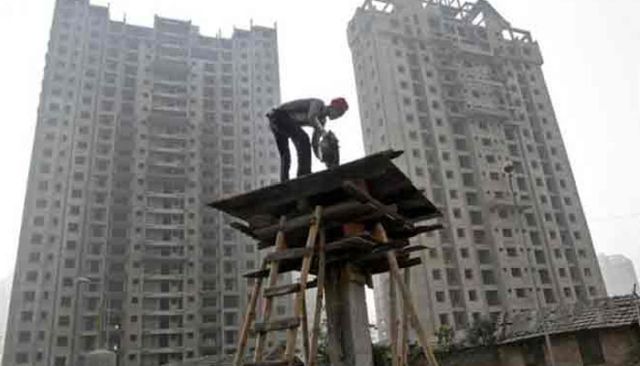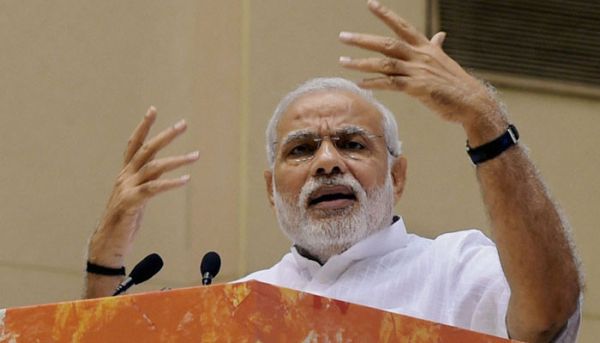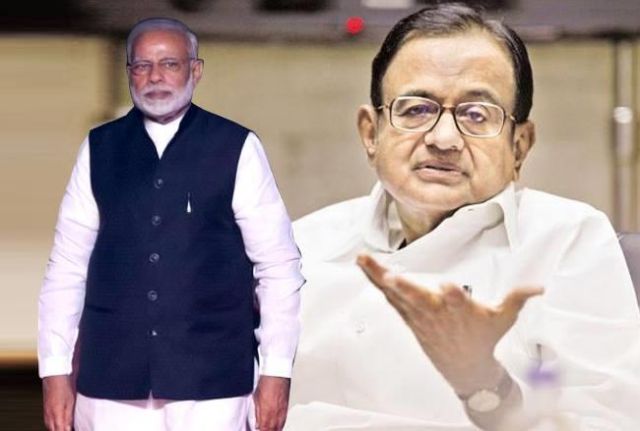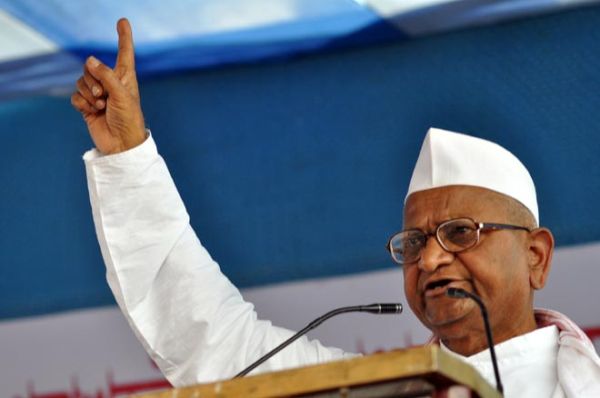
by admin | May 25, 2021 | Opinions
 (4th anniversay of Modi government)
(4th anniversay of Modi government)
By Vinod Behl,
The four years of the Narendra Modi government, marked by landmark reforms, have seen the complete transformation of the unorganised and opaque real estate sector into a regulated, transparent, affordable and consumer-friendly asset class.
Notwithstanding the global slowdown, Indian real estate’s troubles have been self-created. The sector has been bogged down largely due to lack of regulation and transparency and inflated pricing, owing to speculative operations. Over the years, the foul play by a large number of realtors played havoc with the sector. It is in this backdrop that the government put the focus on undertaking reforms to address these fundamental issues plaguing the sector.
The government’s reform and policy initiatives have been directed towards replacing the investor/speculator-driven model with consumer-centric model to ensure that residential property becomes affordable so that every Indian can have a shelter over his head. The results are there for everyone to see.
Property prices have dropped by 7-9 percent in the first quarter of the calendar year in key cities. The government’s flagship mission, ‘Housing for All’, focusing on affordable and mid-segment housing, providing 6.5 per cent interest subsidy (up to Rs 2.67 lakh) under PMAY has been responsible for enhancing affordability. GST has also provided price relief by dismantling multiple taxation and zero tax on ready-to-move homes. All these pro-consumer reforms contributed to bring homes within the reach of the common people.
For long, hundreds of thousands of home buyers across India have been facing hardships due to large-scale project delays. Especially, over 20,000 home buyers in Noida have been under great stress fearing non-delivery of homes due to the developer — Jaypee Infratech — facing insolvency.
The government came to the rescue of home buyers by issuing an ordinance to amend IBC, putting home buyers at par with lenders, thereby paving the way for refund of their money. A large number of housing projects across India are stalled due to shortage of funds, especially as bank funding has been difficult to come. But the reformed and regulated real estate has led to inflow of huge foreign investment of $114 billion between 2015 and 2017, registering a 40 per cent increase in FDI recorded between 2011 and 2014.
Together with FDI, another avenue of developer funding through NBFCs has come as a lifeline for stalled projects, giving new hope to home buyers.
The Real Estate Regulation & Development Act (RERA) has come as a big saviour for property consumers. With its stringent preventive and punitive provisions, RERA has put an end to their exploitation by unscrupulous developers by making transactions fair, transparent and secure.
The reform-oriented government gave top priority to infrastructure development by setting up the Rs 40,000 crore National Investment & Infrastructure Fund.The high priority to highways, with record construction of 25 km per day, has given real estate a connectivity boost.
All the reforms and enabling policies have contributed to the revival of real estate. The worst-hit residential realty has seen a growth of 13 percent in FY18. The commercial real estate has already seen turnaround, with a CBRE report pointing to an all-time high absorption of 11msf during the first quarter of the year, 25 percent up from last year.
The realty revival has also been possible due to turnaround in the economy, with growth bouncing back in the second half of FY18. In the last four years (FY15-18), overall growth rate in the economy showed a modest upstick to 7.3 percent compared to average growth of 7.2 percent in FY11-14.
Though the short-term adverse effects of interruption caused by reforms like demonetisation, RERA & GST have been largely contained and real estate is on the revival path, the government needs to tackle various reform challenges to fast track this process. Notwithstanding GST contributing to ease of business and marked improvement in global Ease of Doing Business Index, there is a need to put single window mechanism in place to speed up projects.
Bringing real estate under GST to derive its full benefits, bringing down transaction costs by rationalising stamp duty and collector rates, according industry status to real estate to access cheap bank funding and effective and speedy implementation of RERA, Housing for All and Smart Cities Mission are the other challenges on hand. Nevertheless, reforms have provided a much needed spring board to real estate to transform into an attractive asset class with sustained growth.
(Vinod Behl is editor, Realty Plus, a leading real estate monthly. He can be reached at vbehl2008@gmail.com )
—IANS

by admin | May 25, 2021 | News, Politics
 New Delhi : As the BJP-led Central government completed four years in office, Prime Minister Narendra Modi on Saturday said development has become a vibrant mass movement and he will continue to serve the people as it is always “India First” for him.
New Delhi : As the BJP-led Central government completed four years in office, Prime Minister Narendra Modi on Saturday said development has become a vibrant mass movement and he will continue to serve the people as it is always “India First” for him.
“On this day in 2014, we began our journey of working towards India’s transformation,” said Modi.
Modi took oath as the Prime Minister on May 26, 2014.
“Over the last four years, development has become a vibrant mass movement, with every citizen feeling involved in India’s growth trajectory, 125 crore Indians are taking India to great heights!” Modi said in a series of tweets.
In another tweet, he thanked the people and said: “I bow to my fellow citizens for their unwavering faith in our government.”
“This support and affection is the biggest source of motivation and strength for the entire Government. We will continue to serve the people of India with the same vigour and dedication,” the Prime Minister said.
Modi also appreciated his government for taking people-friendly decisions and said, “For us, it is always India First.”
“With the best intent and complete integrity, we have taken futuristic and people-friendly decisions that are laying the foundations of a new India. ‘Saaf Niyat Sahi Vikas’ (clean intention, perfect development),” he said, adding the government is gaining confidence of people.
—IANS

by admin | May 25, 2021 | Finance, News, Politics
 Mumbai : The government of Prime Minister Narendra Modi has so far splurged a whopping Rs 4,343.26 crore only for advertisements and publicity through different media, it has been revealed under RTI, an activist said here on Monday.
Mumbai : The government of Prime Minister Narendra Modi has so far splurged a whopping Rs 4,343.26 crore only for advertisements and publicity through different media, it has been revealed under RTI, an activist said here on Monday.
Mumbai-based RTI activist Anil Galgali had sought details from the centre’s Bureau of Outreach and Communication (BOC) on all spend on advertisement and publicity in all media since the present government assumed office.
The replies provided by Financial Advisor, BOC, Tapan Sutradhar on the expenses incurred since June 2014, were a revelation on the massive spends, but owing to all-round criticism of the government, there was a small reduction — almost Rs 308 crore — in 2017, said Galgali.
As per the replies, from June 2014 to March 2015, the government spent Rs 424.85 crore in print publicity, Rs 448.97 crore on electronic media and Rs 79.72 crore on outdoor publicity, totalling to Rs 953.54 crore.
In the next fiscal 2015-16, the spending increased substantially for all media. These included, Rs 510.69 crore on print media, Rs 541.99 crore on electronic media and Rs 118.43 crore on outdoor publicity, or a total of Rs 1,171.11 crore.
In 2016-17, the expenditure incurred on print medium dropped (yet higher than the first year June 2014-March 2015), to Rs 463.38 crore, but for the electronic medium it increased over the previous year to Rs 613.78 crore, and catapulted to Rs 185.99 crore on outdoor publicity, totalling to Rs 1,263.15 crore.
The next year, April 2017-March 2018, there was a sharp drop in spending on electronic media over the previous year to Rs 475.13 crore and a significant drop in outdoor publicity expenses to Rs 147.10 crore.
The RTI replies also said that between April-December 2017 (nine-month period), the government spent Rs 333.23 crore on the print medium alone, with the total figure of last fiscal (April 2017-March 2018) coming to Rs 955.46 crore.
“A detailed analysis proves that after stringent criticism it attracted, especially from the opposition and on social media, over squandering of scarce public resources, the government finally cut down on its publicity expenditure this year by Rs 307.69 crore,” Galgali told IANS.
However, he pointed out that the total spending of last financial year is still significantly higher than the present government’s first year in office when it spent Rs 953.54 crore in just nine months in office.
He added that although it is okay for the government to spend on publicity wherever genuinely required, in case of excess expenses, reins must be tightened and the authorities must publicise all such expenditure on its websites.
—IANS

by admin | May 25, 2021 | Employment, News, Politics
 New Delhi : Congress leader and former Finance Minister P. Chidambaram said on Monday that the biggest issue in the 2019 Lok Sabha election will be unemployment and Narendra Modi government’s “incompetence to create jobs”.
New Delhi : Congress leader and former Finance Minister P. Chidambaram said on Monday that the biggest issue in the 2019 Lok Sabha election will be unemployment and Narendra Modi government’s “incompetence to create jobs”.
Addressing the national executive meeting of the Indian Youth Congress here, Chidambaram said the Modi government did not know how to create jobs.
“There will be many issues but the biggest issue of 2019 election will be unemployment. The government is so incompetent that they don’t know how to create jobs,” he said.
There were vacancies across sectors and thousands of jobs could be further created, he said.
Citing instances, Chidambaram said there was just one teacher in one lakh government schools. “If at least five teachers are recruited in these one-teacher schools, millions of jobs will be created.”
He said there were vacancies of doctors, clerks, peons and safai karamcharis in various departments.
The former Minister said nearly 6,000 teaching posts were vacant in central universities, while in the higher judiciary 410 posts of judges were vacant.
He said if the Congress came to power, it would focus on creating jobs in MSMEs (micro, small and medium enterprises), besides paying attention to exports and off-farm jobs, such as poultry, food processing and diary farming.
“We will not do anything that this government is doing,” he said.
Chidambaram said there was “massive open unemployment” in the country and “jobs can be created when there is demand for more goods and services”.
“More goods and services will be produced with more investments which will come when there is a climate friendly to investment,” he said.
The Congress leader said investment had gone down drastically in the last four years. “Tragedy for India is that investment ratio at this stage is lowest since liberalisation.”
He said sectors such as IT, which were booming in the past, had also shed jobs.
Slamming the Modi government, he said demonetisation and faulty implementation of Goods and Services Tax had destroyed jobs in the MSME sector.
Chdiambaram also referred to the BJP leaders claiming credit for about 100 per cent electrification of villages as “another jumla”.
He said electrification of a vast majority of villages was done during Congress governments and the BJP-led government had completed electrification of only over 18,000 villages which were pending.
—IANS

by admin | May 25, 2021 | News, Politics
 New Delhi : Launching a fresh anti-corruption agitation with an indefinite fast here on Friday, social activist Anna Hazare said his efforts to communicate with the Modi government on issues of Lokpal and agrarian distress had yielded no result.
New Delhi : Launching a fresh anti-corruption agitation with an indefinite fast here on Friday, social activist Anna Hazare said his efforts to communicate with the Modi government on issues of Lokpal and agrarian distress had yielded no result.
“I have written 43 letters to the Modi government in the last four years but did not get any reply,” he said soon after he began his hunger strike at the sprawling Ramlila Maidan here after paying tributes to Mahatma Gandhi at Rajghat.
“The farmers in the country are in distress as they are not getting remunerative prices and the government is not acting to ensure fair prices.”
Hazare has been pressing for setting up Lokpal at the Centre and Lokayuktas in the states to probe corruption cases, bring in new electoral reforms and implementation of the M.S. Swaminathan Committee report to address the agrarian crisis in the country.
He said he would hold discussions with the government during the agitation but his indefinite hunger strike, called ‘Satyagraha’, would continue “till the government comes out with a concrete action plan”.
The activist, who held a major agitation in 2011 against corruption catching the imagination of Indians, said Union Agriculture Minister Radha Mohan Singh and some ministers from Maharashtra met him on Thursday and gave certain assurances.
“But I said I don’t trust you. How many promises you have fulfilled so far? Nothing. So come with concrete action plan,” he said in his address to thousands of supporters gathered at the iconic ground in the heart of Delhi.
Hazare said the Commission for Agricultural Costs and Prices (CACP), which decides prices for 23 crops, should be made autonomous for fair price fixation.
Currently, the Central government controls CACP and cuts the fair price rates suggested by states by 30-35 per cent, he said.
“I will prefer dying for the nation than by heart attack,” said the 80-year-old activist, whose 2011 agitation gave birth to the Aam Aadmi Party (AAP) now ruling in Delhi.
The agitation also contributed to the Congress-led UPA losing the 2014 general elections that brought the BJP to power at the Centre.
Last month, Hazare accused Prime Minister Narendra Modi of not being interested in the appointment of the Lokpal at the Centre.
The veteran activist said Modi was “never serious about Lokpal”.
The reason behind the delay, he said, in the appointment of a Lokpal was because the Prime Minister was afraid that once this became a reality, his office as well as that of his cabinet members would also come under its purview.
—IANS

 (4th anniversay of Modi government)
(4th anniversay of Modi government)



